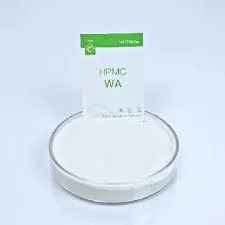
Aug . 13, 2024 19:11 Back to list
Exploring the Versatility and Applications of Propyl Methyl Cellulose in Various Industries
Understanding Propyl Methyl Cellulose A Versatile Polymer in Modern Applications
Propyl methyl cellulose (PMC), a derivative of cellulose, has gained significant attention in various industries due to its unique properties and versatile applications. As a non-ionic, water-soluble polymer, PMC plays a crucial role in fields such as food, pharmaceuticals, construction, and personal care products.
Composition and Properties
Propyl methyl cellulose is synthesized through the chemical modification of cellulose, a natural polymer derived from plant cell walls. During this process, methyl groups are introduced to the cellulose backbone, and propyl groups are also added, resulting in a compound that combines the beneficial properties of both substituents. The degree of substitution—meaning the ratio of methyl and propyl groups—affects the solubility and viscosity of the final product, making it customizable for specific applications.
One of the defining features of PMC is its ability to form a gel-like consistency when mixed with water. This property is crucial for its use as a thickener and binder. Additionally, PMC is known for its thermal stability and resistance to degradation, which makes it valuable in various industrial applications.
Applications in Food Industry
In the food industry, propyl methyl cellulose is often used as a thickener, emulsifier, and stabilizer. It helps improve the texture and mouthfeel of products like sauces, dressings, and dairy items. Because of its water-retaining properties, it is also employed in the production of low-fat and gluten-free products, providing moisture and enhancing palatability. Moreover, PMC is recognized for its ability to encapsulate flavors and nutrients, thus being utilized in functional foods and dietary supplements.
Role in Pharmaceuticals
propyl methyl cellulose

The pharmaceutical sector benefits significantly from the properties of propyl methyl cellulose
. It is commonly used as a binder in tablets and as a controlled-release agent for drugs, allowing for a gradual release of active ingredients in the gastrointestinal tract. This controlled release can enhance the efficacy of medications and improve patient compliance. Additionally, PMC is employed in various topical formulations due to its ability to create a protective film on the skin, aiding in the delivery of therapeutic agents.Contributions to Construction
In construction, propyl methyl cellulose serves multiple functions. It is used in tile adhesives, mortar, and other construction materials to improve workability and adhesion. PMC enhances the water retention of these products, allowing for better hydration of cement and improved strength of the final product. Moreover, it plays a crucial role in reducing the risk of cracking in dry formulations, making it essential for reliable and lasting construction solutions.
Use in Personal Care Products
In personal care and cosmetic formulations, propyl methyl cellulose acts as a thickener and stabilizer. It is commonly found in products like lotions, creams, and shampoos. Its emulsifying properties allow for the effective combination of oil and water, improving product stability and enhancing user experience. Furthermore, PMC's film-forming ability aids in creating a smooth application, making it a preferred ingredient in many beauty and grooming products.
Conclusion
Propyl methyl cellulose is a remarkable and multifunctional polymer that has proven its worth across multiple industries. Its unique properties—such as water solubility, thermal stability, and versatility—make it an invaluable ingredient in food, pharmaceuticals, construction, and personal care applications. As research continues to uncover its potential, the usage of PMC is likely to expand, further demonstrating the significance of this modified cellulose derivative in modern society. Whether improving the texture of our food or enhancing the effectiveness of medications, propyl methyl cellulose stands out as a vital component in the advancement of various sectors.
-
Versatile Hpmc Uses in Different Industries
NewsJun.19,2025
-
Redispersible Powder's Role in Enhancing Durability of Construction Products
NewsJun.19,2025
-
Hydroxyethyl Cellulose Applications Driving Green Industrial Processes
NewsJun.19,2025
-
Exploring Different Redispersible Polymer Powder
NewsJun.19,2025
-
Choosing the Right Mortar Bonding Agent
NewsJun.19,2025
-
Applications and Significance of China Hpmc in Modern Industries
NewsJun.19,2025







